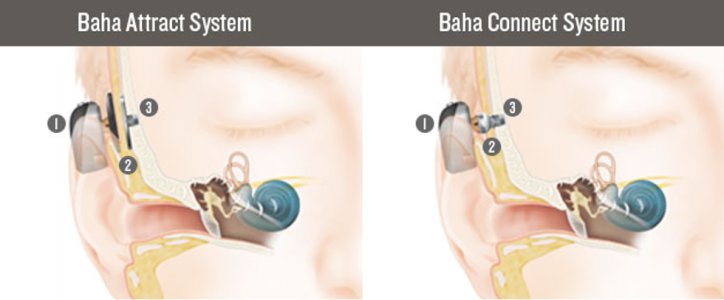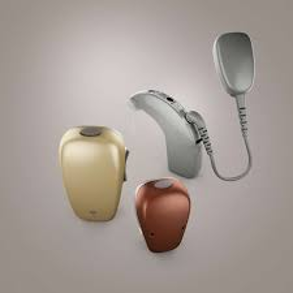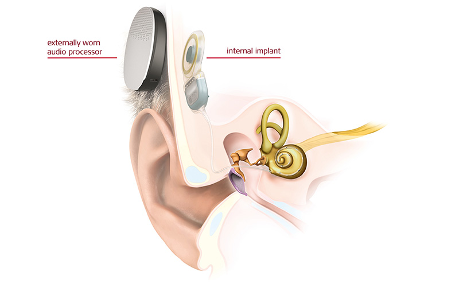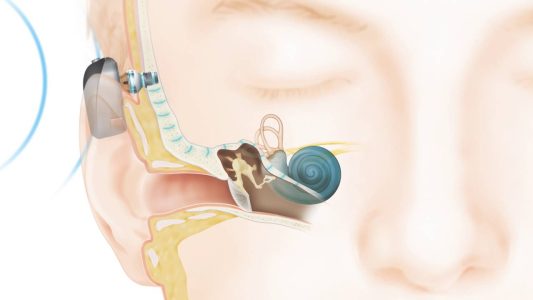Bone conducting implants are a special type of hearing device for patients with :
- conductive hearing loss or mixed hearing loss
- microtia
- hearing loss due to previous ear surgery
- chronically discharging ears
- perforated ear drums or
- single sided deafness.
For patients with a moderate to severe conductive hearing loss, hearing aids may not help their hearing much and they need to consider a bone conducting implant.
Benefits to expect from a Bone Conducting Implant
- You can hear better, even in a noisy environment
- You will enjoy a clean, more natural sound
- You will enjoy better speech recognition compared to hearing aids.
- Hear sounds as if they are coming from both sides
How does a bone conduction implant work?
- If your external ear and middle ear is damaged or has missing parts, is difficult for sound to reach the inner ear. A bone conduction implant works by bypassing the parts of the external and middle ear which don’t work.
- Sound is picked up by the microphone and transmitted into vibrations
- These vibrations are sent through the skin to the implant that is located in the skull bone and then onto the healthy inner ear.
A bone conduction implant system has the following main components:
- External sound processor
- Connection between sound processor and implant (2 options)
- Option 1: via a magnetic connection with no external protrusion in the skin
- Option 2: via a direct connection through an abutment which protrudes through the skin.
- Internal implant which needs to be surgically implanted into the skull bone.

Figure 3: Item 1: BAHA processor, Item 2 BAHA implant connection which can be magnetic or an abutment, Item 3: internal implant.


How do I know which Bone conducting Implant is suitable for me?
Let our doctor evaluate you and recommend a suitable implant for your level of hearing loss and lifestyle needs. The advantages and disadvantages of each type and brand of implant will also be explained to you.





